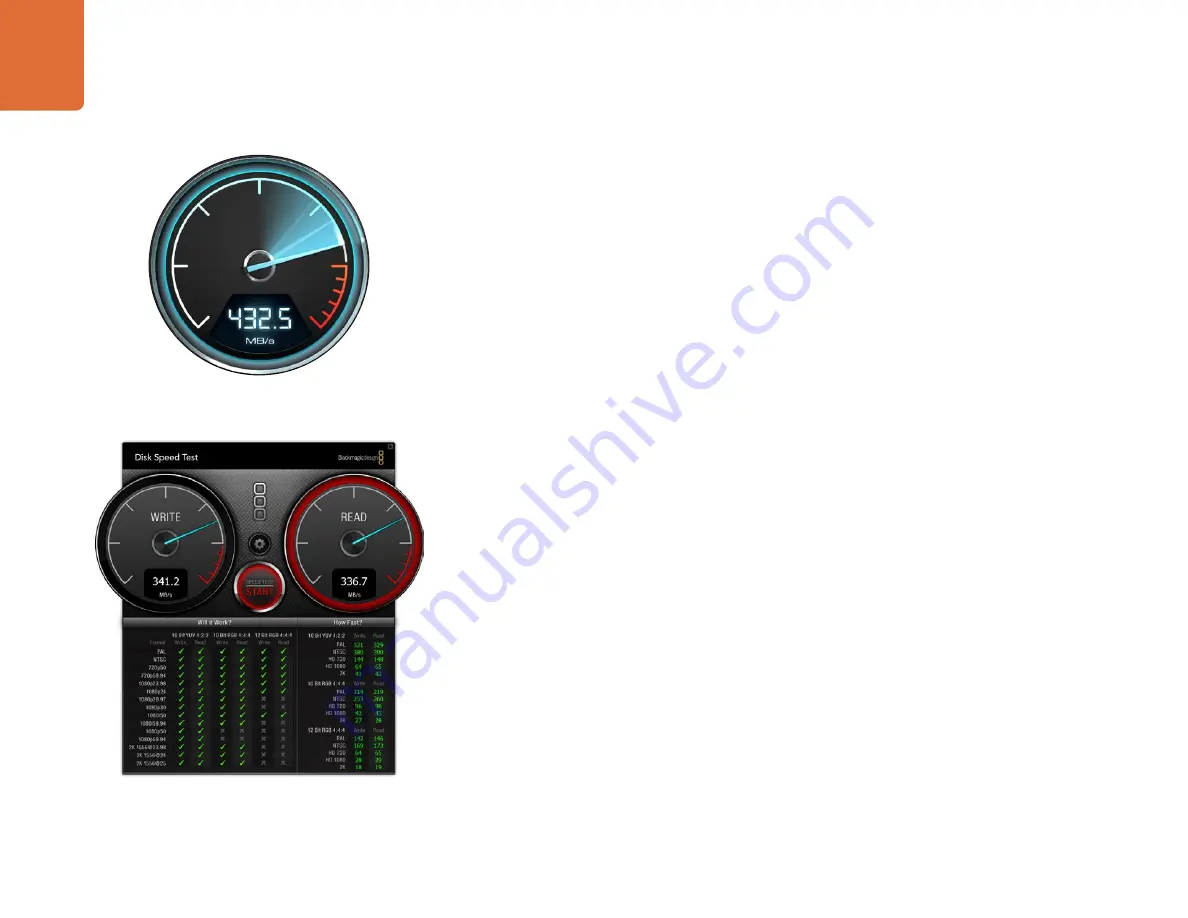
16
About SSDs and SD Cards
Preparing SSDs on a Windows computer
The 'format' dialog box can format an SSD or SD card in the exFAT format on a Windows PC. Remember
to back up anything important from your media as all data will be lost when it is formatted.
Step 1.
Connect the SSD to your computer with an external dock, such as Blackmagic MultiDock, or
cable adapter. Plug an SD card into your computer's SD card slot or via an SD card reader.
Step 2.
Open the 'start menu' or 'start screen' and choose 'computer'. Right-click on your SSD
or SD card.
Step 3.
From the contextual menu, choose 'format'.
Step 4.
Set the file system to 'exFAT' and the allocation unit size to 128 kilobytes.
Step 5.
Type a volume label, select 'quick format' and click 'start'.
Step 6.
Your SSD or SD card will quickly be formatted and made ready for use.
Checking Disk Speed
Blackmagic Disk Speed Test is a fun application that measures the read and write performance of
storage media, then displays the results using video formats.
If you have ever wondered whether your hard drive is suitable for recording ("write") or playback
(“read”) of a particular video format, you can use Disk Speed Test to find out. Test the performance
of your media drives with a single click of the 'start' button! Disk Speed Test will even show you how
many streams of video your storage is capable of handling.
Disk Speed Test is installed by the Desktop Video Software. It is also available as a free download
for Mac OS X from the Mac App Store.
Use Disk Speed Test to find out the performance of your
media drives.
Disk Speed Test interface.






























